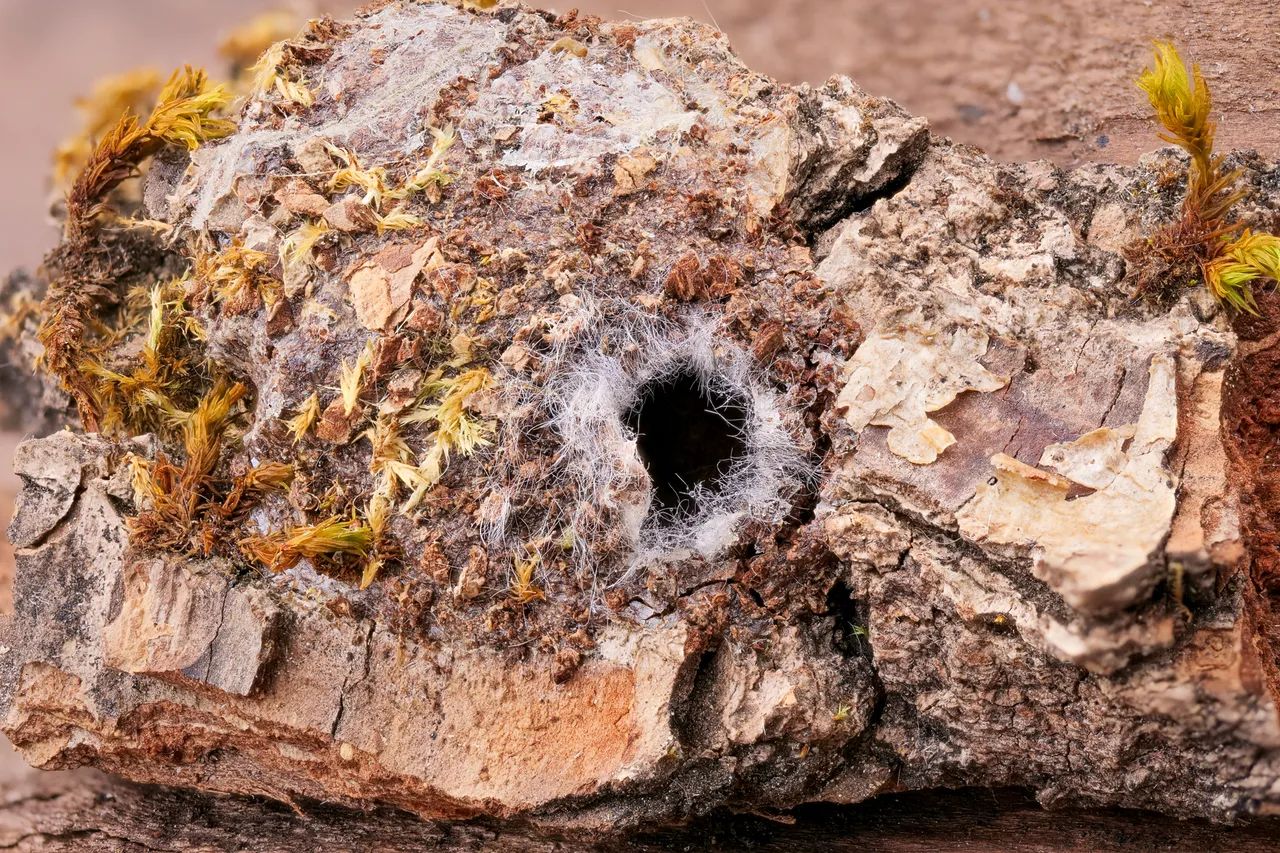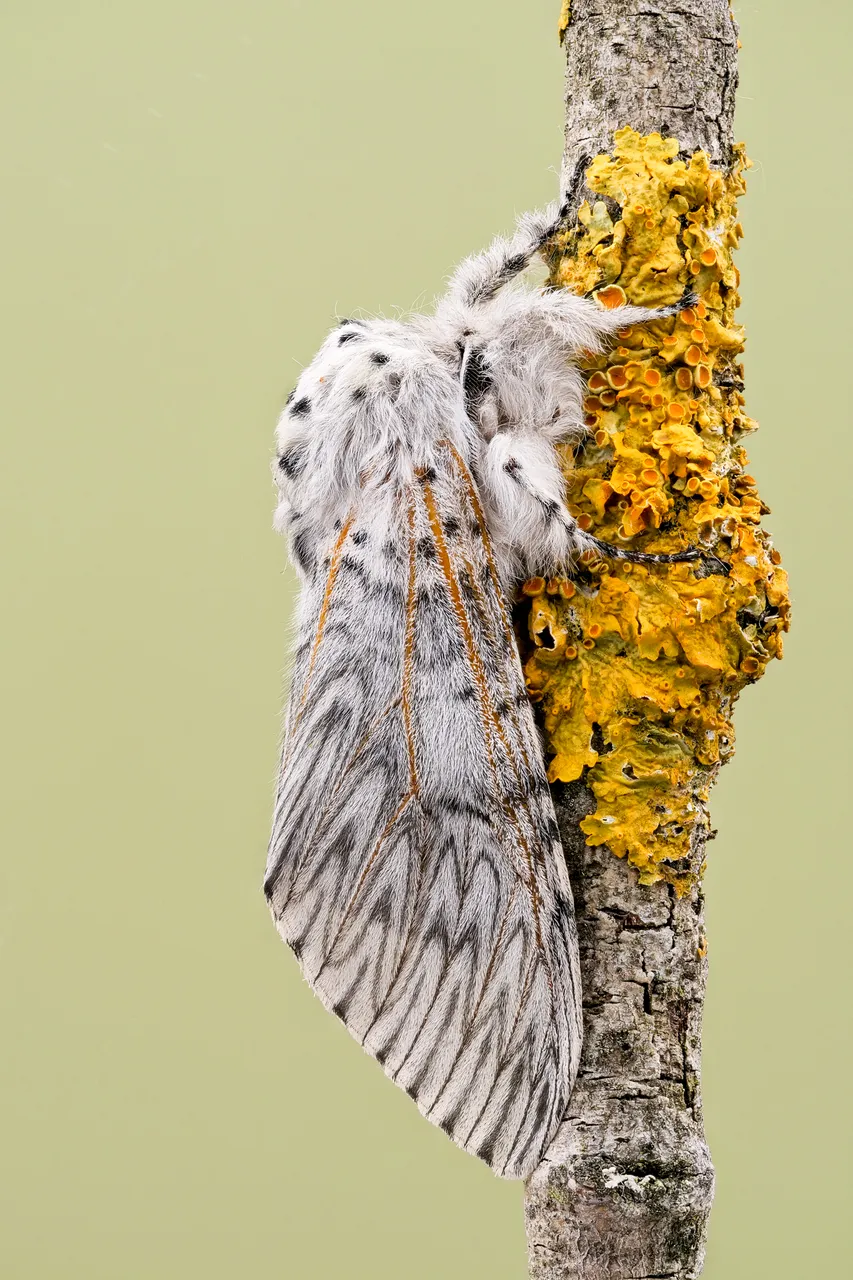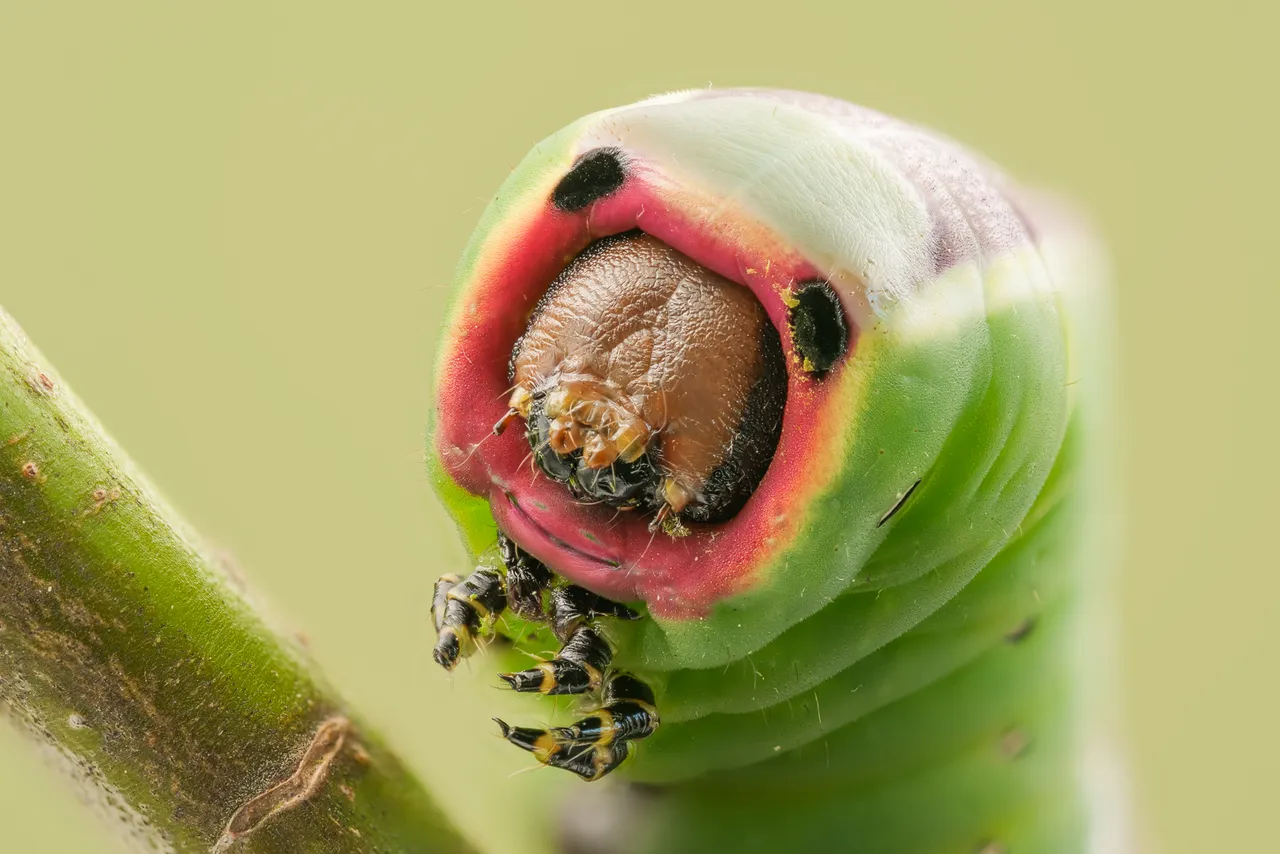Großer Gabelschwanz ■ Puss moth
Cerura vinula (Linnaeus, 1758)
Im vergangenen Jahr hatte ich von meinem Fund über drei Eiern vom großen Gabelschwanz berichtet. Nach einer erfolgreichen Zucht der Raupen haben die sich verpuppt. Bei einer öffentlichen Exkursion mit siebzig Teilnehmern im Sommer, habe ich eine Puppe vermisst. Anscheinend hat ein Teilnehmer sie nicht mehr zurückgegeben oder achtlos als ein Stück Holz weggeworfen. Die beiden anderen wurden von mir vergangenen Oktober an einem kühlen Ort außerhalb der Wohnung überwintert. Sie benötigen während der Überwinterung keine Aufmerksamkeit. Im Frühling Anfang April, wurden die Puppen in die warme Wohnung gebracht und die Kokons mit Wasser besprüht. Wenn der Falter bereit ist, zu schlüpfen, sondert er ein Sekret ab, welches den Kokon weich macht. So kann er durch ein Loch den Kokon verlassen.
Last year I had reported about my find of three eggs from the big fork tail. After a successful breeding of the caterpillars they pupated. On a public excursion with seventy participants in summer, I missed one pupa. Apparently one participant did not return it or carelessly threw it away as a piece of wood. The other two were wintered by me last October in a cool place outside the apartment. They don't need any attention during the hibernation. In spring, early April, the pupae were brought into the warm apartment and the cocoons were sprayed with water. When the moth is ready to hatch, it secretes a secretion that softens the cocoon. So it can leave the cocoon through a hole.

▲ Click on the image for full resolution ▲
Am 16.04.2020 sind aus den beiden Kokons zwei Gabelschwänze geschlüpft. Schon in der ersten Nacht haben die beiden kopuliert. Meine Freude war grenzenlos. Aus zwei Puppen ein Männchen und ein Weibchen zu bekommen war großes Glück. So war meine Nachzucht auf jeden Fall gesichert.
On 16.04.2020 two fork tails hatched from the two cocoons. Already in the first night they copulated. My joy was boundless. To get a male and a female from two pupae was great luck. So my breeding was secured in any case.
♂ ♀

▲ Click on the image for full resolution ▲

▲ Click on the image for full resolution ▲
Nach weinigen Tagen ist aus den Eiern die erste Raupe geschlüpft. Noch sind sie klein und haben kein besonders attraktives Aussehen. Das wird sich aber im Verlauf mehrere Häutungen ändern.
After a few days the first caterpillar hatched from the eggs. They are still small and do not have a particularly attractive appearance. But this will change in the course of several moultings.

▲ Click on the image for full resolution ▲
Noch ist die Raupe klein und benötigt nur wenig Futter. Da war auch schon mein nächstes Problem. Die jungen Blätter der Salweide blieben nur wenige Stunden frisch und musste täglich gewechselt werden. Die Raupe entwickelt sich schnell und ihre Farben werden kräftiger.
The caterpillar is still small and needs only little food. There was already my next problem. The young leaves of the willow only stayed fresh for a few hours and had to be changed daily. The caterpillar develops fast and its colours become stronger.

▲ Click on the image for full resolution ▲
Auf die erwachsene Raupe habe ich mich ganz besonders gefreut, denn kaum eine Raupe hat eine so faszinierende Strategie um Feinde abzuwehren wie der große Gabelschwanz. Er besitzt an der Kopfunterseite eine Drüse, mit der er bei drohender Gefahr, seinem Angreifer Ameisensäure bis zu 30 cm weit entgegen sprühen kann. Diese Abwehrstrategie, kenne ich von keiner anderen Raupe.
I was especially looking forward to the adult caterpillar, because hardly any other caterpillar has such a fascinating strategy to ward off enemies as the puss moth. It has a gland on the underside of its head with which it can spray formic acid up to 30 cm away from its attacker when danger threatens. I do not know this defence strategy from any other caterpillar.

▲ Click on the image for full resolution ▲

▲ Click on the image for full resolution ▲
Die Raupe hat sich gestern das letzte Mal gehäutet und ist nun bereit für die Verpuppung. Hierzu spinnt sie Holzspäne in Ihren Kokon ein und verpuppt sich an einem Stuck Holz. Der Kokon ist sehr hart und widerstandsfähig. Der Falter entwickelt sich im Kokon und schlüpft nächstes Jahr im Frühling. Weitere interessante Informationen und Bilder findet ihr in einem meiner früheren Beiträge.
The caterpillar shed its skin for the last time yesterday and is now ready to pupate. For this purpose it spins wood shavings into its cocoon and pupates on a piece of wood. The cocoon is very hard and resistant. The moth develops in the cocoon and hatches next year in spring. More interesting information and pictures can be found in one of my earlier articles.
Hier geht es zu meinem früheren Beitrag:
@faltermann/in-edlem-nerz-in-noble-mink
Here is the link to my earlier contribution:
@faltermann/in-edlem-nerz-in-noble-mink
| Category: | Macro |
| Camera: | Panasonic Lumix DC-G9 |
| Lens: | Olympus M.Zuiko Digital ED 60mm 1: 2.8 Macro |
| Location: | Germany, Bavaria, Lower Franconia, Kreuzwertheim |
Wenn dir mein Beitrag gefällt, freue ich mich über deine Nachricht.
Herzlichen Dank und viele Grüße vom @faltermann 🐛
If you like my contribution, I am looking forward to your message.
Many thanks and greetings from Germany 🦋
